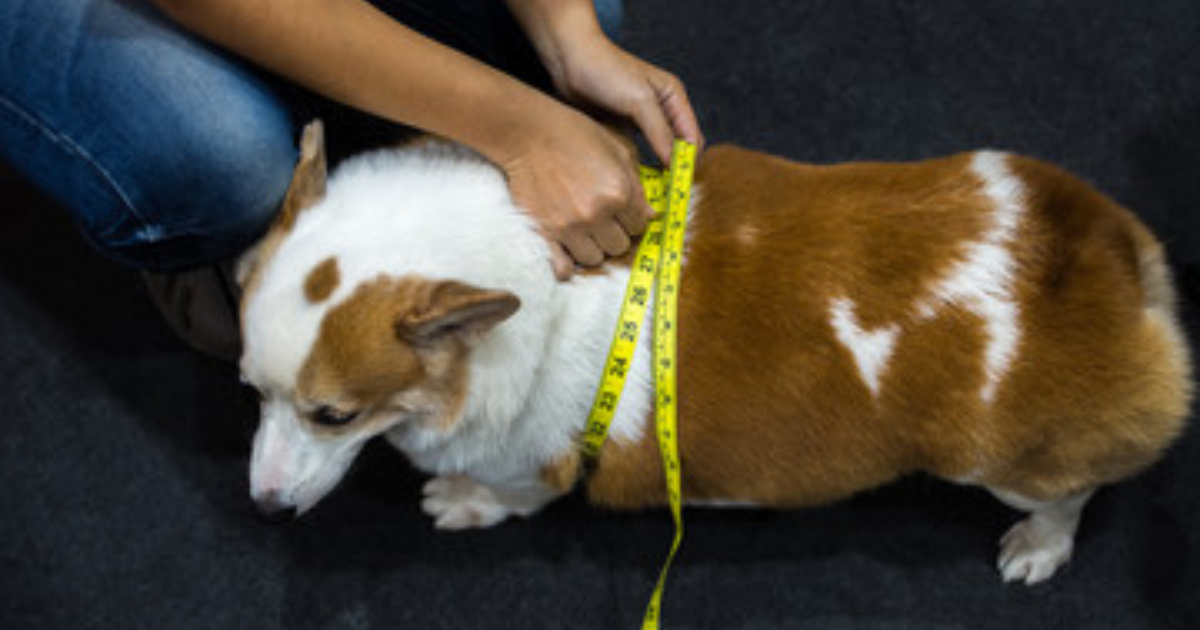
Is it time for your dog to lose some weight?
Just over half – 51% - of dogs in the UK are overweight and yet nearly 70% of owners think their pet is just the right size, according to a canine obesity report by the Pet Food Manufacturers’ Association.
So, how do you tell if your dog is a bit on the hefty side or, in extreme cases, obese?
Experts agree weighing your dog and speaking to your vets is vital to find out the best baseline for your dog’s breed and size.
But you can also tell a lot from just looking at and stroking your dog.
If the ribs, spine and hip bones are hard to feel, if the waist is barely visible with a broad back or if there is a layer of fat on the belly and base of the tail, then it’s likely your dog needs to diet.
If your dog has no visible waist and his belly is clearly drooping - with heavy fat pads on his lower back and the base of his tale - then, the sooner the better.
And the reasons are clear. Extra weight puts extra pressure on a dog’s joints. The cartilage in the joint deteriorates, which can lead to arthritis. Speak to your Registered Animal Medicine Advisor (RAMA) or contact your local store for more advice on pet nutrition
Too much weight comes with many other risk factors, some of which could even result in surgery. There is also the possibility that, just like us, weight gain could cause heart disease and high blood pressure. It’s also linked to breathing problems, poor sleep patterns, skin diseases, anaesthesia problems, increased risk of certain tumours and, most devastatingly of all, obesity can take up to two years off your best buddy’s life.
So, if you’re thinking of putting your four-legged friend on a weight loss programme here are a few tips
- Choose a high-quality food. Named meat should always be the number one ingredient
- Feed a high quality ‘light’ food, which contains less fat and calories while still providing all the nutrients your dog needs
- Remember to base their feeding requirements on their ideal weight, not their actual weight. You will also need to take into account their level of exercise
- If you’re unsure about how much to feed your dog, use a reputable website like the PFMA (Pet Food Manufacturers’ Association) which is the lead governing body representing the UK pet food industry. www.pfma.org.uk/dogcalorie-calculator-nrc-method
- Measure their daily portions out using weighing scales to ensure accuracy
- Slow down mealtimes so your dog works their brain and gets more enjoyment from their meals. Try using a slow feeder bowl or puzzle feeder or use every day household items such as a clean two litre bottle with the label and cap removed. Remember food enrichment should be fun for the dog so don’t make it more difficult than they’re ready for
- Don’t be afraid to use treats. All dogs should have the pleasure of training with their owner using tasty treats. Avoid using high calorie, high fat options like biscuit treats and instead opt for high quality rewards like pure meat. If you’re frequently using treats, cut your dog’s meals by 10%
- Be strict with the size of treats rather than the quantity – most dogs will be just as motivated for a piece of chicken the size of a grain of rice compared to the size of a fingernail
- If you are concerned about calorie intake, use a portion of your dog’s daily kibble as treats – just remember he might not find them as exciting as real meat so might not work as hard for them
- Limit the amount of ‘snacks’ a dog consumes – aka treats that have no purpose.
- Try not to feed scraps from the table and train some fun impulse control exercises to stop your dog snatching food they shouldn’t have
- Ensure your dog is getting enough exercise. This doesn’t have to be walking, it could be running, swimming or playing
- Take up a new activity together to improve your bond and both of your fitness levels. How about agility or man trailing?
- Weigh your dog regularly to keep track of their health
- If you are concerned about your pet’s weight, visit the vet for a health check-up to rule out any medical causes
- Too much weight comes with many other risk factors, some of which could even result in surgery. There is also the possibility that, just like us, weight gain could cause heart disease and high blood pressure. It’s also linked to breathing problems, poor sleep patterns, skin diseases, anaesthesia problems, increased risk of certain tumours and, most devastatingly of all, obesity can take up to two years off your best buddy’s life.









